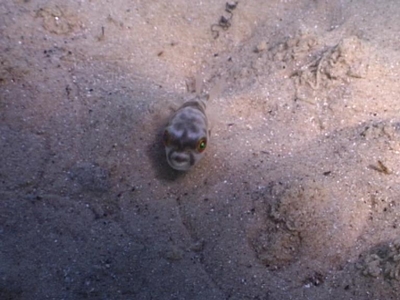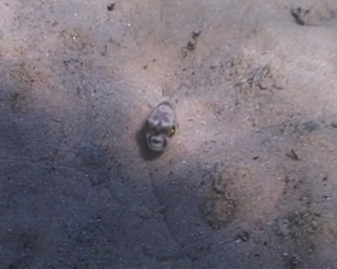General Description
Body robust, somewhat rounded, densely covered by small spines that extend onto tail base; dorsal and anal fins reaching or almost reaching tail base; lower edge of eye well above pectoral-fin base. Pale grey to yellowish above, with indistinct grey to medium brown spots on back and upper sides behind pectoral-fin base; light grey on top of head to upper lip and down both sides of eye, sometimes merging on cheek; no spots on belly. To 25 cm.
Habitat
On sandy bottoms and in seagrass beds in bays, estuaries and along the coast, in depths of 0-20 m.
Soft substrates
Seagrass meadows
Distribution guide
Southern Australia.
Species Group
Depth
Shore (0-1 m)
Shallow (1-30 m)
Water Column
Max Size
25 cm
Harmful
Poisonous toxins in body.
Commercial Species
No
Global Dispersal
Native to Australia
Conservation Status
- DSE Advisory List : Not listed
- EPBC Act 1999 : Not listed
- IUCN Red List : Not listed







